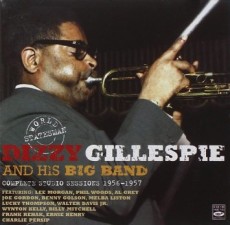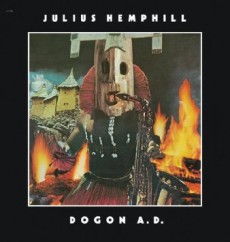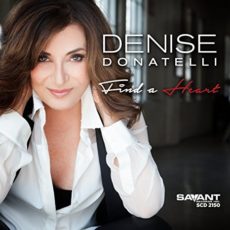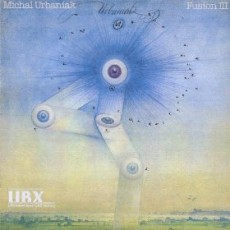
Daily Dose Of Jazz…
Talib Ahmad Dawood, formerly Alfonso Nelson Rainey, was born on January 26, 1923 on Antigua. He first took lessons from his father, a trumpeter who played in marching bands; his mother was a singer who accompanied him on piano. He also learned to play the banjo and the pipe organ.
His further education came in the United States at from his high school and music school experiences at the end of the 1930s in New York. Because of the support he received fromof the Barrymore Foundation, Talib first took the stage name Barrymore Rainey. After studying at the Juilliard School in 1940, he played with Tiny Bradshaw, Louis Armstrong, Benny Carter, Andy Kirk, Jimmie Lunceford, Roy Eldridge and other swing orchestras.
In Philadelphia he met Sheikh Nasir Ahmad, an Ahmadiyya missionary, through whom he converted to Islam and took the name Talib Dawud. In the second half of the 1940s and again in 1956 he was a member of the Dizzy Gillespie Big Band, performing with in 1957 at the Newport Jazz Festival.
1958 saw Dawud married to singer Dakota Staton who was no longer actively working since 1959 and the two operated an Africa-Import Shop in New York City. As a member of the Ahmadiyya Muslim sect, which distanced itself from the Nation of Islam, he wrote numerous articles in the African-American Chicago daily New Crusader on the controversy between Elijah Muhammad and Malcolm X.
Trumpeter Talib Dawud never had the opportunity to record as a leader, and on July 9, 1999 he passed away in New York City.
More Posts: trumpet

Daily Dose Of Jazz…
Julius Arthur Hemphill was born on January 24, 1938 in Fort Worth, Texas and attended M. Terrell High School, studied clarinet with John Carter before taking up the saxophone due to the early influence of Gerry Mulligan.
Hemphill joined the Army in 1964, served for several years, and later, for a brief period, performed with Ike Turner. In 1968 he moved to St. Louis, Missouri and co-founded the multidisciplinary arts collective. This brought together saxophonists Oliver Lake and Hamiet Bluiett, trumpeters Baikida Carroll and Floyd LeFlore and writer/director Malinke Robert Elliott.
A move to New York City in the mid-1970s witnessed Julius thriving in the free jazz community. He gave saxophone lessons to David Sanborn, and Tim Berne among others. He founded the World Saxophone Quartet in 1976 after collaboration with Anthony Braxton. He remained a member until the early 1990s and then formed a saxophone quintet.
Hemphill recorded over twenty albums as a leader and another ten records with the World Saxophone Quartet and recorded or performed with Bjork, Bill Frisell, Jean-Pau Bourelly and others. Late in his life his ill-health including diabetes and heart surgery, forced Hemphill to stop playing saxophone, but he continued writing music. His saxophone sextet, led by Marty Ehrlich, also released several albums of Hemphill’s music, but without Hemphill playing. The most recent is entitled The Hard Blues, posthumously recorded live in Lisbon.
Prior to his death on April 2, 1995 in new York City, composer and alto saxophonist and flautist recorded a multi-hour interview on his life and music for the Smithsonian Institute and it is held at the archive center of the National Museum of American History in Washington D.C.

Review: Denise Donatelli | Find A Heart
Singers come and go but vocalists are that rare breed who understand how to get inside the lyric and claim it as their own, regardless of the composer. The vocalist is a storyteller, a vehicle to transport you to faraway destinations that you may have nestled in the forgotten regions of your memory or have yet to be fortunate enough to visit. This is the voyage I book every time I sit down to listen to Denise Donatelli.
With her latest release, Find A Heart, Denise has compiled a cache of eleven compositions that speak To one of her favorite subjects… Love! She has the unique ability to discover rare gems that easily translate to jazz and she delivers each song with the fluidity of a seasoned concierge.
Denise surrounds herself with incomparable talent that is enviable to say the least. Her quartet is comprised of pianist and music director Geoffrey Keezer, drummer Marvin “Smitty” Smith, bassist Carlitos Del Puerto, guitarist Leonardo Amuedo. Beyond this is her ability to know when less is more as with Not Like This and Day Dream where her voice is one instrument in the duet.
Like the innovators who challenged the status quo to evolve the music, Denise knows when to enlist the right voices to translate her vision for songs composed by Sting, Crosby, Ferrante and Beck, to name a few, that sit easily alongside Hampton, Mercer, Burke and Strayhorn in the Great American Songbook. As with Fagen’s Big Noise, New York she brought in the fiery tenor saxophone of Bob Sheppard only to offset the more gentle Love and Paris Rain with the mellow tones of Christine Jensen’s soprano.
She also knows when to bring in the sensuality of the Chris Botti trumpet and the lush strings of Alma Fernandes, Matt Funes, Darrin McCann and Giovanna Clayton to ease you through the exposé of my personal favorite Practical Arrangement. If that isn’t enough incentive for one to lend an ear, without any fanfare she pours out her heart to pen lyrics to Billy Child’s In This Moment.
One will notice that the arrangements equally invite the listener into the conversation between the musicians which compliments the listening experience. Each time you listen past her wonderful voice you will hear a nuance you did not notice in prior encounters. This is a key component to great musicianship and why she has been nominated once again for a Grammy.
Setting aside any prejudice one may think I harbor as a longtime fan and musical supporter, I take my listening seriously and there is no price on my musical enjoyment. Suffice it to say, I may not know where the journey will lead me but I am excitedly anticipatory of the beauty I will encounter. Denise Donatelli may not promise me the moon, but she always delivers the poetry of the stars.
carl anthony | notorious jazz | january 23, 2016
Give A Gift Of Jazz ~ Share ![]()
#preserving genius
More Posts: bandleader,history,instrumental,jazz,review,vocal

Daily Dose Of Jazz…
Jerry Blake was born Jacinto Chabania on January 23, 1908 in Gary, Indiana and grew up in Nashville, Tennessee. He began his musical education playing violin before switching to reeds.
In 1924 he toured with the Sells-Fioto Circus Band but was left stranded in Chicago. Making the best of the situation, he joined Al Wynn’s band, then played with Bobby Lee and Charlie Turner. He then toured Europe in 1928-29 as a member of Sam Wooding’s ensemble.
Back in the States in the 1930s Jerry played in the US with Chick Webb,Zack Whyte and Don Redman, then was off to Europe again with Willie Lewis from 1934 to 1935. After his return home he spent time performing with Claude Hopkins, Fletcher Henderson and Cab Calloway, acting as the latter’s musical director during his 1938-42 stint.
In the early 1940s Blake played with Count Basie, Earl Hines, Lionel Hampton and Redman again. Sometime around 1943 he had a mental breakdown and never played again for the rest of his life, most of which he spent in institutions. Alto saxophonist and clarinetist Jerry Blake, who never recorded as a leader, passed away on December 31, 1961.

Daily Dose Of Jazz…
Michał Urbaniak was born on January 22, 1943 in Warsaw, Poland. He started his music education during high school and continued from 1961 in Warsaw in the violin class of Tadeusz Wronski. Learning to play the saxophone he first played in a Dixieland band, and later with Zbigniew Namyslowski and the Jazz Rockers, performing during the 1961 Jazz Jamboree festival.
The following year Michal played with Andrzej Trzaskowski band, The Wreckers, touring festivals and clubs in the USA in Newport, San Francisco, Chicago, Washington and New York City. A return to Poland saw him working with the Krzysztof Komeda Quintet from 1962 to 1964, touring Scandinavia and remaining to form his own band with Wojciech Karolak, that became starting point for the famous Michał Urbaniak Fusion.
Urbaniak returned to Poland and the violin, and created the self-named Michał Urbaniak Group, to which he invited, among others, vocalist Urszula Dudziak, pianist Adam Makowicz, bassist Pawel Jarzebski and on drums Czeslaw Bartowski. Their debut recording on the international scene was in 1970 with Parathyphus B, and during the Montreux ’71 festival, he was awarded “Grand Prix” for the Best Soloist and a scholarship to the Berklee Colege of Music, though he declined to attend.
He played his final concert in Poland in 1973 and emigrated with Urszula Dudziak to the United States, signed with Columbia Records, formed the band Fusion and released Super Constellation. His 1978 Urbanizer project fused rap, hip-hop and a R&B vocal quartet. By 1995 he was engaging a 60-piece full symphony with jazz group, rapper and Apple computer in concert and recorded both CD and DVD.
Over the course of his career he has performed and recorded with Steve Jordan, Marcus Miller, Kenny Kirkland, Tony Bun, Omar Hakim, Victor Bailey, Weather Report, Freddie Hubbard, Elvin Jones, Herbie Hancock, Chick Corea, George Benson, Billy Cobham, Joe Zawinul, Ron Carter, Kenny Barron, Buster Williams and Quincy Jones.
Violinist Michal Urbaniak played on the 1985 session of the Miles Davis Tutu album and in 2012 appeared in the Polish film My Father’s Bike. He hs recorded thirty-eight albums to date and continues to perform, record and compose.


